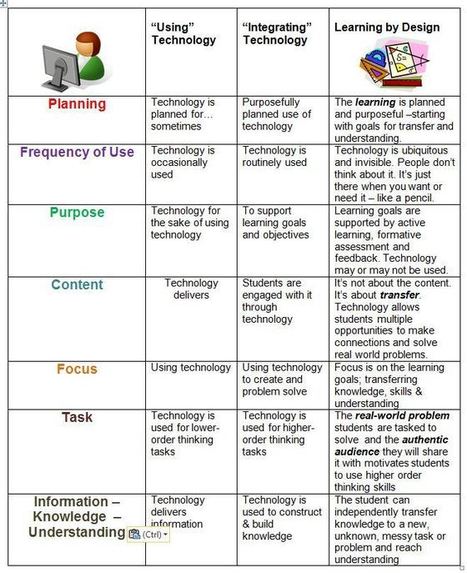Allowing learners to struggle will actually help them learn better, according to research on “productive failure” conducted by Manu Kapur, a researcher at the Learning Sciences Lab at the National Institute of Education of Singapore.
Research and publish the best content.
Get Started for FREE
Sign up with Facebook Sign up with X
I don't have a Facebook or a X account
Already have an account: Login
Tech tools that assist all students to be independent learners & teachers to become better teachers
Curated by
Beth Dichter
 Your new post is loading... Your new post is loading...
 Your new post is loading... Your new post is loading...
|

Dean Mantz's curator insight,
January 1, 2014 2:09 PM
This is a well developed table addressing the integration of technology into classroom instruction all while basing pedagogy via the Learning By Design framework.
Rebecca Wilkins's curator insight,
July 17, 2015 9:22 PM
This is a nice marriage of technology integration and UbD. 
Jennifer McGuff's curator insight,
August 1, 2015 5:56 PM
Really like this graphic of technology integration and learning by design. |












Absolutely, its the impasse where real learning takes places. Manu Kapur has a great presentation about this http://youtu.be/LnljG9I33KM
Needs more research.
Yes i totally agree with the author. Allowing kids to strugggle as they learn will make them understand and solve the problem better.
I think that the education system will change, as now of days, the teachers usually guide the students on how to solve the problem. But now after it is proven that allowing the students to struggle will let the students learn better. The school should adapt and instead of guiding the students,they should only explain the problem and allow the students to solve it themselves.
Some of the bad influence will be that the student will find the problems to hard and give up more easily or start to hate school.
Some good influence are that the student may learn better and will very much help in their futures.
Everyone benifits from it as the students will learn better and also learn more values like not giving up easily. Besides the students the economy will also benifit as when the student start working, it would be easier for him to understand and adapt and Singapore economy could improve faster.
No it is not foolproof as everychild is different. So diffferent students may take different time to understand or they may not even understand at all.